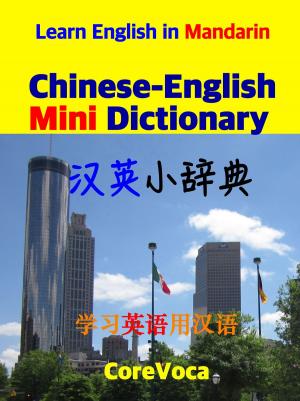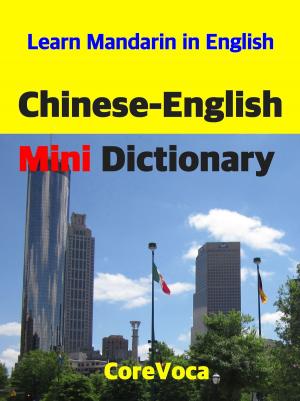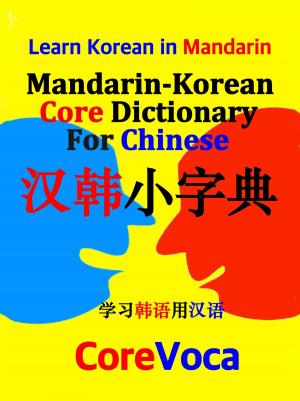Romanized Korean-English Compact Dictionary
Learn 9000 Korean vocabulary in English!
Nonfiction, Reference & Language, Foreign Languages, Korean, Dictionaries, Business & Finance, Career Planning & Job Hunting, Careers| Author: | Taebum Kim | ISBN: | 1230001819250 |
| Publisher: | Core Voca | Publication: | August 25, 2017 |
| Imprint: | Language: | English |
| Author: | Taebum Kim |
| ISBN: | 1230001819250 |
| Publisher: | Core Voca |
| Publication: | August 25, 2017 |
| Imprint: | |
| Language: | English |
This book is ideal for learners of Korean as a second language who want to communicate more effectively and also for learners of English who know Korean.
This book lists 8,752 core Korean words with English equivalents. Main entries are in Romanized Korean in boldface type alphabetically with Hangul (Korean alphabet). Next, in the same line, parts of speech label, and the entry’s English equivalents with stressed syllables* in boldface type followed by standard American English pronunciation.
bal myeong 발명 [n.] invention [invenʃən]
bal myeong ga 발명가 [n.] inventor [inventər]
bal myeong ha da 발명하다 [v.] invent [invent]
Korean is written with two different scripts: Hangul and Hanjja (Chinese character). While Hangul is mostly used, Chinese characters should be used in order to clarify meaning since almost 80% of Korean language derives from Chinese characters.
This book is ideal for learners of Korean as a second language who want to communicate more effectively and also for learners of English who know Korean.
This book lists 8,752 core Korean words with English equivalents. Main entries are in Romanized Korean in boldface type alphabetically with Hangul (Korean alphabet). Next, in the same line, parts of speech label, and the entry’s English equivalents with stressed syllables* in boldface type followed by standard American English pronunciation.
bal myeong 발명 [n.] invention [invenʃən]
bal myeong ga 발명가 [n.] inventor [inventər]
bal myeong ha da 발명하다 [v.] invent [invent]
Korean is written with two different scripts: Hangul and Hanjja (Chinese character). While Hangul is mostly used, Chinese characters should be used in order to clarify meaning since almost 80% of Korean language derives from Chinese characters.















